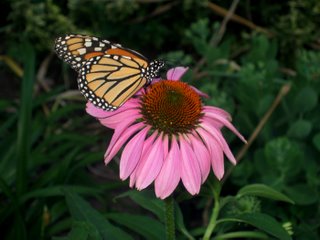 Lady Liberty
Lady Liberty
License Plates and Acrylic on Aluminum
55" x 40"
2004

Wavy Flag on Steel
License Plates and Acrylic on Steel
50" x 35"
2003Michael Kalish owes his art career to a South Dakota license plate and a fascination with the fundamental principles of America. After spending most of his life on the baseball field, Kalish was uncertain about what life after college had in store. "I was driving around one day and saw this car with a South Dakota tag. It was unlike anything I'd ever seen and I found myself obsessed with the thought of collecting license plates from all over the country and turning them into art." Allowing his creativity to take over, Kalish began collecting tags and experimenting with ways to fuse them together to form a sculptural flag of the United States, his first piece.
Kalish's passion led him to New York where he worked to create a pop icon collection featuring sculptures of The Beatles, Jim Hendrix, Albert Einstein, Uncle Sam, Jim Morrison and David Letterman. As well, he has expanded his American anthology with The Statue of Liberty, The Cowboy, Reverend Martin Luther King Jr. and of course, The Baseball Series.
His work has been showcased in galleries nationwide and included in the private collections of celebrities such as Sharon Stone, Courteney Cox and David Arquette, Jay Leno and Rolling Stone Editor-in-Chief, Jann Wenner. He has been featured in The New York Times, US Weekly, Art in America, American Style magazine, Art Business News, The London Times and has made appearances on Access Hollywood, Fox News and Good Day New York.
Kalish's largest installation to date, The American Presidents was displayed in the windows of Barneys, New York for the 2000 presidential election. The 42-piece installation of each U.S. president was created using the plates from each of their respective home states.
The subjects of Kalish's work references a broad sampling of American culture, from the all-American pastime of baseball and the morning cup of Joe to portraits of popular, political and cultural icons. His signature medium, the license plate, embraces his ideal of Americana with his own contemporary sophistication, curiosity, and distinctive style.


















